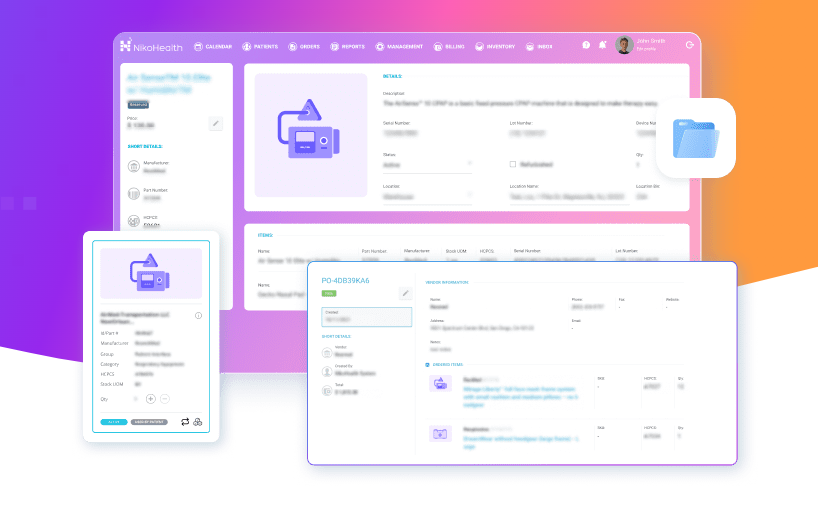In today’s rapidly evolving healthcare landscape, managing finances efficiently is critical for providers to ensure sustainability, maintain compliance, and deliver high-quality care. One tool that has emerged as indispensable for healthcare organizations is revenue cycle management software. By automating and optimizing the financial workflow, this technology enables healthcare facilities to enhance revenue collection, reduce errors, and improve overall operational efficiency.
Understanding Revenue Cycle Management
Revenue cycle management (RCM) encompasses the entire financial process in healthcare, from patient registration to the final payment of medical bills. It involves a complex series of steps that includes patient scheduling, insurance verification, coding, billing, claims submission, payment processing, and reporting. Inefficient management of this cycle can lead to delayed payments, claim denials, compliance issues, and financial losses for healthcare providers.
The role of revenue cycle management software is to integrate these processes into a single, cohesive system, allowing for real-time tracking, enhanced accuracy, and streamlined communication between different departments.
Key Features of Revenue Cycle Management Software
Modern RCM software offers a wide array of features designed to optimize financial operations in healthcare organizations:
1. Patient Registration and Scheduling
Accurate patient information is the foundation of effective revenue management. RCM software simplifies the registration process, ensuring that demographic data, insurance details, and eligibility information are correct from the start. Integrated scheduling tools allow providers to manage appointments efficiently, reducing no-shows and improving resource allocation.
2. Insurance Verification and Eligibility
Claim denials are often the result of incorrect insurance information or eligibility issues. Revenue cycle management software automatically verifies patient insurance coverage in real time, minimizing the risk of claim rejection and reducing administrative overhead.
3. Medical Coding and Billing
Proper coding is critical to ensuring that healthcare providers are reimbursed accurately. RCM software incorporates automated coding features that comply with the latest ICD, CPT, and HCPCS standards. By reducing manual errors and ensuring correct coding, organizations can minimize claim rejections and accelerate payments.
4. Claims Management
Submitting claims to insurers can be a time-consuming and error-prone process. Revenue cycle management software streamlines claims management by automating submission, tracking claim status, and providing alerts for pending or denied claims. This automation allows billing teams to focus on resolving issues quickly and efficiently.
5. Payment Posting and Collections
RCM software simplifies the process of posting payments from multiple sources, including insurance companies and patients. Automated reconciliation tools ensure that payments are accurately recorded, while integrated collections management helps healthcare providers follow up on outstanding balances.
6. Reporting and Analytics
Data-driven decision-making is essential in healthcare finance. Revenue cycle management software provides comprehensive reporting and analytics capabilities, enabling organizations to monitor key performance indicators (KPIs) such as days in accounts receivable, claim denial rates, and collection effectiveness. These insights help administrators identify bottlenecks and optimize financial operations.
Benefits of Implementing Revenue Cycle Management Software
The implementation of revenue cycle management software offers numerous benefits for healthcare providers, from financial efficiency to improved patient satisfaction.
1. Increased Revenue and Cash Flow
Automating financial processes reduces delays, minimizes errors, and ensures timely claim submissions. By streamlining the entire revenue cycle, healthcare organizations can improve their cash flow and maximize reimbursements.
2. Reduced Administrative Burden
Manual billing and claims processing are labor-intensive and prone to errors. RCM software automates these tasks, freeing administrative staff to focus on patient care and other critical functions.
3. Enhanced Accuracy and Compliance
Healthcare billing is subject to strict regulatory requirements. Revenue cycle management software ensures compliance with coding standards, payer rules, and government regulations, reducing the risk of audits and penalties.
4. Improved Patient Experience
A seamless billing process contributes to a positive patient experience. With RCM software, patients receive accurate statements, clear payment instructions, and timely notifications, reducing confusion and frustration.
5. Actionable Insights for Decision-Making
RCM software provides detailed analytics and reporting, enabling administrators to identify inefficiencies, track performance metrics, and implement strategic improvements in financial operations.
Challenges in Revenue Cycle Management
Despite its many benefits, revenue cycle management faces several challenges that healthcare organizations must address:
1. Complexity of Insurance Policies
The variety of insurance plans, each with its own rules and reimbursement rates, adds complexity to the revenue cycle. Advanced RCM software must be able to handle multiple payers and adapt to changing regulations.
2. Data Accuracy and Integration
Accurate data is essential for effective revenue cycle management. Integrating patient records, billing systems, and electronic health records (EHR) can be challenging, but modern RCM software is designed to provide seamless interoperability.
3. Claim Denials and Rejections
Denied or rejected claims are a significant source of revenue loss. Efficient claim management and automated tracking within RCM software can help organizations quickly resolve issues and reduce the denial rate.
4. Staff Training and Adoption
Successful implementation of revenue cycle management software requires proper staff training and adoption. Organizations must ensure that administrative and clinical staff are familiar with the system and understand its benefits.
Future Trends in Revenue Cycle Management Software
The healthcare industry is continuously evolving, and so is the technology supporting financial operations. Several trends are shaping the future of revenue cycle management software:
1. Artificial Intelligence and Machine Learning
AI and machine learning algorithms are increasingly being integrated into RCM software to predict claim denials, optimize coding, and automate repetitive tasks. These technologies improve accuracy and speed up the revenue cycle.
2. Cloud-Based Solutions
Cloud-based RCM software offers flexibility, scalability, and cost savings. Providers can access real-time data from multiple locations, collaborate efficiently, and reduce IT infrastructure costs.
3. Patient-Centric Billing
As patient engagement becomes a priority, RCM software is focusing on transparent billing and personalized payment options. This approach enhances patient satisfaction and encourages timely payments.
4. Advanced Analytics and Predictive Insights
Predictive analytics tools help organizations forecast cash flow, identify high-risk claims, and make data-driven decisions. This proactive approach allows healthcare providers to mitigate financial risks effectively.
5. Integration with Telehealth and Remote Services
With the growth of telehealth, RCM software is evolving to handle virtual consultations, remote monitoring, and digital payment systems, ensuring a seamless revenue cycle across traditional and virtual care settings.
Choosing the Right Revenue Cycle Management Software
Selecting the right RCM software is a crucial decision for healthcare organizations. Consider the following factors:
- Ease of Use: The software should be user-friendly and require minimal training.
- Integration Capabilities: It should seamlessly integrate with existing EHR systems, billing platforms, and other healthcare applications.
- Automation Features: Look for software that automates key tasks like coding, claim submission, and payment posting.
- Compliance and Security: Ensure the software complies with healthcare regulations such as HIPAA and provides robust data security.
- Scalability: The system should be capable of supporting future growth and adapting to changes in the healthcare environment.
- Vendor Support: Reliable technical support and regular updates are essential for smooth operations.
Conclusion
In the modern healthcare ecosystem, financial efficiency is just as important as clinical excellence. Revenue cycle management software plays a pivotal role in streamlining financial operations, reducing administrative burdens, and ensuring timely reimbursements. By adopting advanced RCM solutions, healthcare providers can not only improve revenue collection but also enhance patient satisfaction and achieve long-term sustainability.
As technology continues to advance, integrating AI, cloud computing, and predictive analytics into revenue cycle management will further optimize financial workflows and help healthcare organizations stay ahead in an increasingly complex industry. For any healthcare provider looking to modernize their financial operations, investing in reliable and comprehensive RCM software is no longer optional—it is essential.

